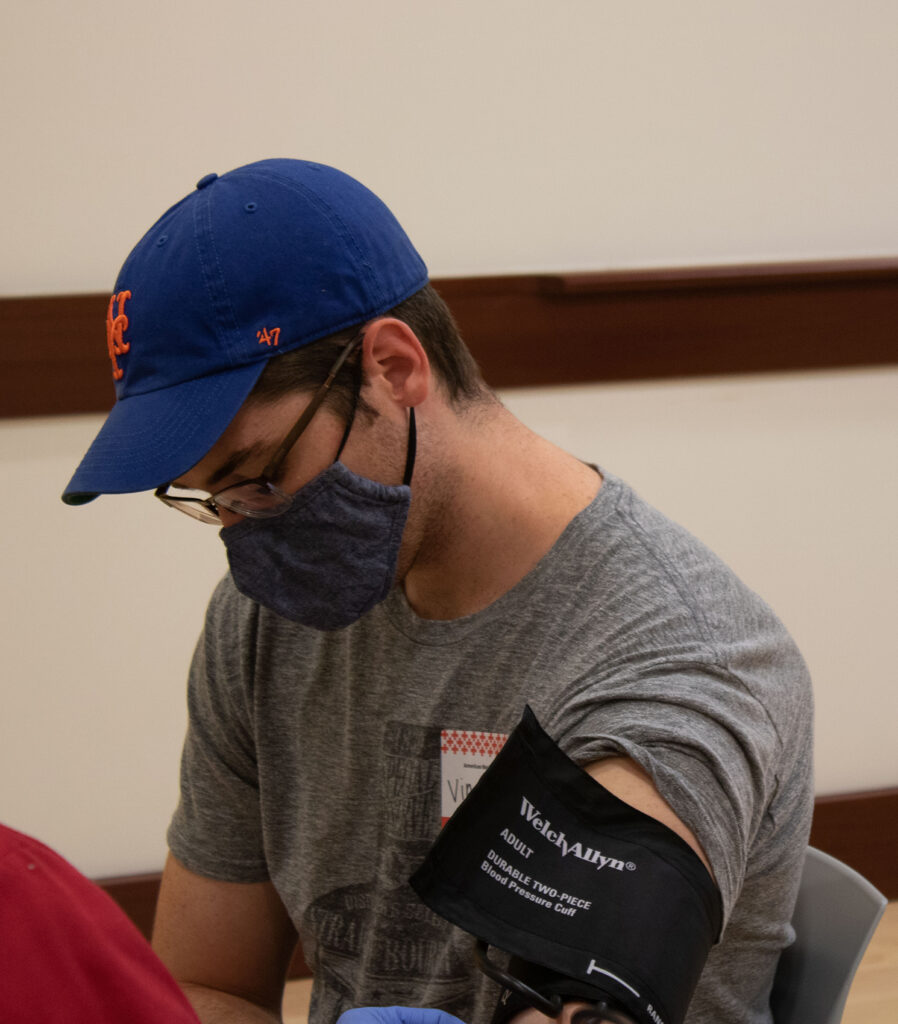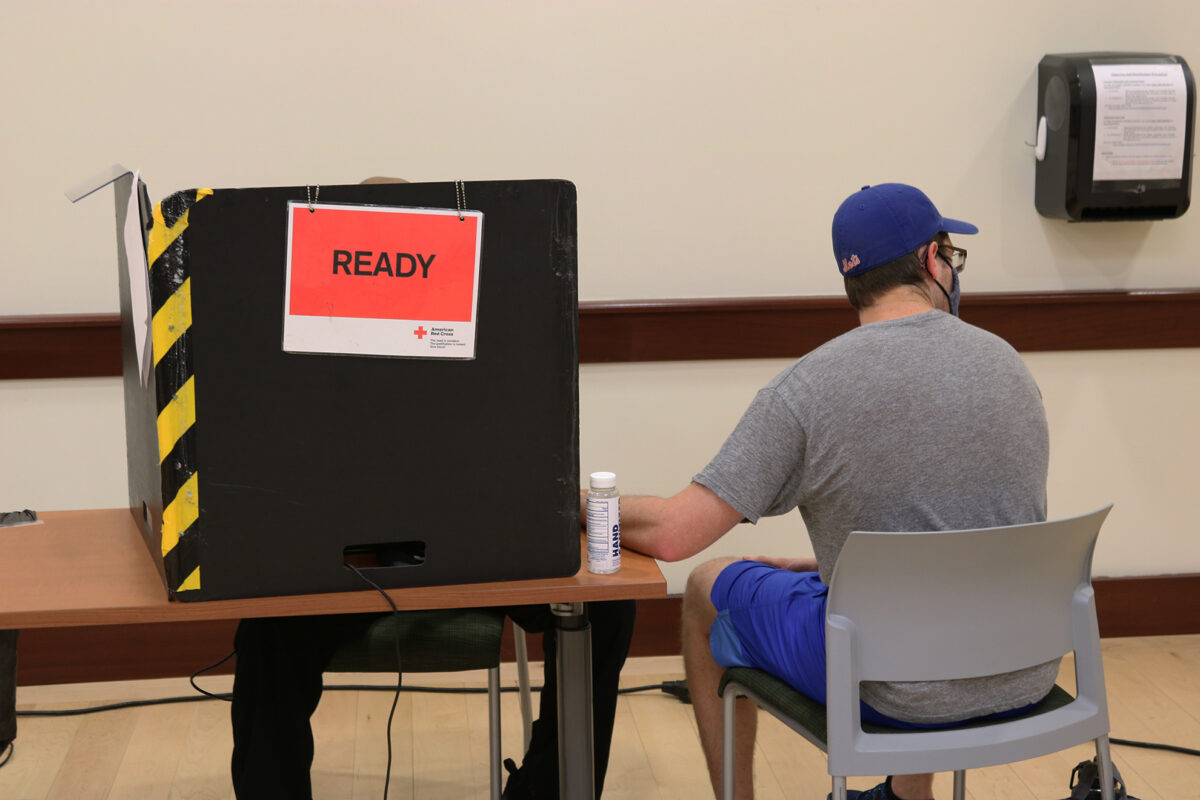Quinnipiac University’s North Haven campus hosted a blood drive run by the American Red Cross amid a nationwide blood shortage on Sept. 24.
Amanda Vargas, a junior nursing major at Quinnipiac, volunteered to help organize the event. She has participated in blood drives before the pandemic, and after a long break Vargas was ready to help once more.
“Every time you donate you save three lives. I think that one person having that effect, it’s great,” Vargas said. “It feels awesome to be back. This is the first blood drive in over a year that I’ve been to, so it feels nice.”
Nationwide blood reserves have been drained over the last year. Particularly before a COVID-19 vaccine was mass-produced, donating blood was a risky endeavor. There were less donors willing to leave home which led to less blood drives. Obstacles such as social distancing stood in the way of the actual act of donating. There was also the issue of making sure the blood was clean of the virus before donating.

“I think, especially after COVID, being that a lot people and things couldn’t be in person and being that people were hesitant to go out, scared to get COVID, a lot of blood donations had to be canceled,” Vargas said.
Those cancellations led to the blood shortage facing hospitals and doctors today. Ursula Sowinski, the account manager for the Connecticut Red Cross, led and coordinated the blood drive, and stressed the need for donors.
“Right now we have a critical shortage of blood, especially Os, and every pint saves up to three lives,” Sowinski said. “So anyone who can donate, it’s so, so important for them to come out.”
O blood types are universal blood donors, meaning that people in that blood group can donate red blood cells to anyone in need. Given its versatility, it’s always a highly-sought after blood type.
“Every time you donate you save three lives. I think that one person having that effect, that’s great.”
Quinnipiac junior nursing volunteer Amanda Vargas
Vincent Vauman, a graduate student in the pathologists’ assistant program at Quinnipiac, knew that. In fact, it’s a big reason he came out to donate.
“I’m an O-negative blood type, so my blood is always in demand,” Vauman said. “So I think it’s just really useful for the hospital systems in the county.”

The blood drive consisted of 39 donors who donated blood, nine of which were first-time donors, according to Red Cross results supplied to Associate Director of Graduate Student Affairs Stefano Fasulo. The event resulted in 31 units of blood donated which translates to potentially 93 lives saved. It allowed a maximum of 45 scheduled participants due to COVID-19-related restrictions that limited the amount of donors in the room at one time.
Hamden resident Ann Mendillo started giving blood because it served as a volunteer hour at her job for Ion Insurance in Cheshire, Connecticut. However, when the company discontinued the program, Mendillo kept on coming.
“I always try to give blood when I can,” Mendillo said. “I started quite some time ago and stopped for a little while because my hemoglobin was always low, but now I got back into it.”
Sowinski said the blood donated will go to the Red Cross’ blood bank in Farmington, Connecticut. Five Red Cross staffers and volunteers like Vargas who worked the blood drive, all of whom served a role in helping people in need.
“My father also received blood before he passed, and it’s very meaningful,” Sowinski said. “Everybody that’s part of Red Cross and blood services are helping save lives. It goes from the volunteers, and especially the donors.”

